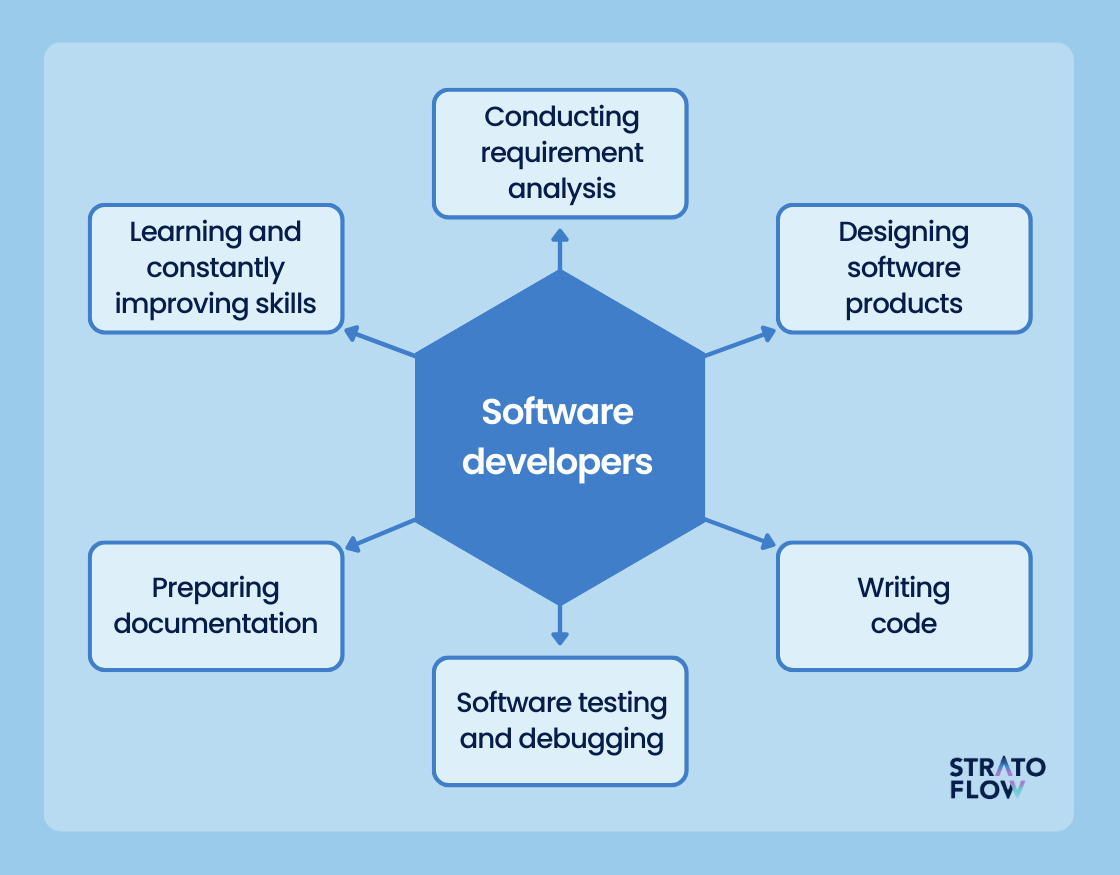The Benefits of a Dedicated Development Team in an Open Market
The Benefits of a Dedicated Development Team in an Open Market
Blog Article
Dedicated Developers vs. In-House Teams: Which Is Right for You?
The choice between using dedicated designers and preserving an internal group is a significant one that can impact the trajectory of your jobs and overall organization strategy. Committed programmers provide a level of versatility and customized competence that can be useful for details, temporary initiatives. Conversely, in-house teams contribute to a cohesive company culture and a nuanced understanding of long-lasting goals. By taking a look at essential elements such as budget, project range, and preferred control, you can much better figure out which strategy aligns with your organizational needs. The implications of this selection expand past prompt end results-- consider the broader impact on your organization landscape.
Comprehending Dedicated Programmers
The growing demand for specialized abilities in the tech sector has brought about the introduction of devoted developers as a feasible service for several organizations. These specialists are commonly acquired on a task basis, enabling companies to utilize details expertise without the lasting dedication related to full-time hires. Committed programmers are frequently embedded within a customer's team, giving flexibility and scalability to fulfill task requirements.
This model enables companies to access a global skill swimming pool, which is particularly useful in a rapidly advancing technological landscape. Devoted developers can be sourced from different geographical locations, making sure that firms can find the appropriate ability set at competitive prices. They typically bring a wealth of experience and expertise, having serviced diverse projects across different sectors.
In addition, devoted designers can concentrate solely on the jobs at hand, improving efficiency and effectiveness. They are outfitted to incorporate flawlessly right into existing operations, collaborating carefully with in-house teams to accomplish job objectives. This approach not just decreases the problem of employment and training but also permits companies to continue to be dexterous, adjusting promptly to transforming market needs and technological innovations.
Advantages of In-House Teams

Moreover, in-house groups have a tendency to have a deeper understanding of the firm's mission, worths, and objectives. This positioning can improve employee interaction and inspiration, as employee really feel more linked to their job and the organization's success. Furthermore, having a dedicated in-house team permits better alignment of approaches and objectives, as these participants are regularly concentrated on the firm's priorities.
In-house teams likewise facilitate quicker decision-making processes, as they can respond a lot more swiftly to difficulties and modifications. The recognized connections and experience with business procedures enable structured operations and lowered miscommunication. Inevitably, the combination of a cohesive society, alignment with business objectives, and efficient interaction makes internal teams an important possession for several organizations, specifically those aiming to grow lasting development and advancement.
Price Factors To Consider
When reviewing price considerations, both dedicated designers and in-house teams present distinct economic effects for companies. Engaging dedicated developers typically entails a pay-per-project or per hour price design, which can be affordable for companies with fluctuating project needs. This technique permits flexibility in scaling resources up or down, ensuring that companies just spend for the services they require.
On the other hand, in-house groups require dealt with costs, including wages, advantages, and overhead costs such as office and tools. While this design uses higher control and instant accessibility of resources, it might result in greater long-lasting expenses, especially if the work does not validate a full-time personnel.
Additionally, companies ought to take into consideration the covert expenses associated with recruitment and training of internal staff members, which can even more stress budgets. In some situations, the moment and sources spent on handling an in-house group can interfere with the company's core business goals.

Task Management and Adaptability
Project management and adaptability are crucial elements that influence the selection between specialized designers and in-house groups. Devoted developers generally offer a high level of versatility, allowing companies to scale resources up or down based latest web technologies upon project needs. This dexterity can be particularly advantageous for organizations experiencing changing workloads or those looking for to introduce swiftly. Committed groups commonly have actually established processes for taking care of projects efficiently, leveraging certain methods like Agile or Scrum, which assist in repetitive progression and versatility.

Eventually, the choice in between in-house groups and specialized developers rests on the preferred level of adaptability and the certain project monitoring demands. Companies have to examine their operational characteristics, job intricacy, and resource accessibility to determine which alternative aligns ideal with their tactical purposes.
Making the Right Option
Selecting the ideal development strategy-- in-house groups or devoted programmers-- calls for a cautious analysis of various aspects that align with a firm's tactical objectives. dedicated development team. Initially, consider the nature of the job. Dedicated designers might be more appropriate if it requires specialized abilities or a fast scale-up. Conversely, in-house teams can give better continuity and combination with existing workers.
Next, assess your budget. Dedicated developers typically offer an affordable service for short-term jobs, while internal groups might sustain higher lasting expenditures as a result of salaries, advantages, and expenses prices. Assess the degree of control and collaboration desired; in-house groups normally cultivate more powerful interaction and placement with firm society.
In addition, think about the time structure. If instant results are necessary, dedicated programmers can be onboarded quickly, whereas building an internal group takes time for employment and training. Lastly, weigh the lasting vision of your company. If continuous development is essential, investing in an in-house group may produce much better returns in time. Eventually, the decision rests on a detailed evaluation of these factors, making sure alignment with your business's functional needs and general purposes.
Final Thought
To conclude, the choice in between dedicated developers and internal teams hinges on project demands and organizational goals. Devoted programmers provide flexibility and specialized know-how, making them ideal for temporary efforts. Alternatively, internal groups grow a natural culture and deeper alignment with long-term objectives. Mindful analysis of spending plan restrictions, job timelines, and preferred control levels is vital for establishing one of the most ideal strategy, making certain alignment with tactical concerns and operational efficiency.
The decision in between utilizing committed designers and maintaining an internal team is a substantial one that can impact the trajectory of your projects and general company strategy.Job administration and flexibility are crucial elements that influence the selection between dedicated programmers and internal teams. dedicated development team.In comparison, in-house teams might excel in preserving a regular project administration structure due to their familiarity with the organization's society and long-term objectives. Dedicated designers frequently offer a cost-efficient service for temporary jobs, while internal teams might incur greater long-lasting costs due to wages, benefits, and pwa development expenses expenses.In conclusion, the choice in between devoted designers and internal groups hinges on task requirements and business goals
Report this page